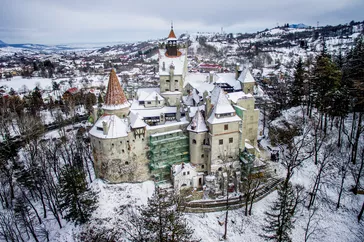Summary
Exploring the Enigmatic Castles of Romania
The castles in Romania are hauntingly beautiful—it’s no wonder they inspired the legend of Dracula. Known for their magnificent architecture and rich history, these structures provide a glimpse into the past.
Introduction to Romanian Castles
Romania is home to numerous castles that draw visitors from around the globe. Each castle, with its distinct architecture and story, adds to the allure of this Eastern European nation. Not only are they aesthetically pleasing, but they are also steeped in fascinating history, making them ideal destinations for history buffs and travelers alike.
Top Castles to Visit
1. Bran Castle
Often referred to as “Dracula’s Castle,” Bran Castle is one of the most visited tourist attractions in Romania. Its picturesque location and historical connections to Vlad the Impaler make it a must-see.
2. Peleș Castle
Peleș Castle, situated in the Carpathian Mountains, is renowned for its stunning architecture and elaborate interiors. Built in the late 19th century, it served as the summer residence for the Romanian royal family.
3. Corvin Castle
Corvin Castle, also known as Hunyad Castle, is one of the largest castles in Europe. Its Gothic-Renaissance architecture and numerous legends about its past make it a fascinating location to explore.
Historical Significance
The historical significance of these castles cannot be overstated. Many of them were built during the Middle Ages to defend against invasions while also serving as royal residences. As you explore each castle, you will uncover tales of bravery, betrayal, and the rich tapestry of Romanian history.
Cultural Legacy and Myths
Moreover, these castles are steeped in folklore. The legend of Dracula, which has captivated audiences worldwide, draws on historic figures such as Vlad the Impaler. Consequently, the blend of history and myth continues to intrigue tourists, making these castles not just historical sites but part of a larger narrative.
In conclusion, the enchanting castles of Romania offer a unique combination of architectural beauty and rich history. They represent an important aspect of Romania’s cultural heritage, drawing visitors who are eager to experience the tales and legends that surround them.




